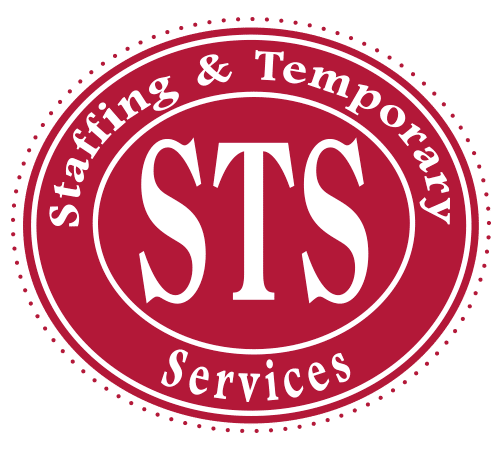
You lost an employee. Suddenly, the pressure is on to not only fill the position, but to hire someone who won’t miss a beat. It’s a daunting task, and having your remaining employees pick up the slack is making work more stressful by the day. In these situations, you can’t afford to make one of these common recruiting mistakes.
The last thing you should do is hire a person from an old stack of resumes. It’s time to update that old job posting and start vetting candidates. Here’s a list of common hiring mistakes you can avoid as you navigate the recruitment process.
No. 1 Writing an Incoherent Job Description
There is a long list of hiring tips for employers so let’s start at the beginning. Remember, you’re selling your job just as much as these candidates are selling themselves to you. That’s why recruiters need to start with a strong job description.
Before posting the open position, make sure you’re clearly explaining the job you wish to fill, not the type of person you’re looking to hire. You can figure out the personality stuff later. You need to find someone who can actually perform the job first.
Clearly stating the duties for the job will give a potential candidate a transparent idea of what they’re applying for. A good way to go about this is describing what a typical day may look like and what tasks the candidate will be asked to perform.
This is also a good time to include ADA considerations. Remember to always list the physical demands of the job. If the employee will routinely lift 50 pounds, let them know. If the job includes climbing, balancing, stooping, pulling or even standing for long periods of time, put it in the job description.
Next, clearly state the skills it takes to perform the job. The prerequisites needed for the job will give you a good launching point during the screening and interview process. Make them prove they possess the skills you need by having them detail their experience during the interview.
No. 2 Posting Positions to the Same Old Job Boards
Once you’ve crafted the perfect job posting with the proper description and prerequisites, it’s time to share it with the masses. But where?
You may have a favorite online job board you go back to whenever you have a position available, but if you want to attract more candidates you need to cast a wider net by posting to multiple websites. Candidates flow between different job boards, so your listing needs to be where they are.
However, collecting resumes from different sites will take a little more work. If you’re in a specific industry or looking for an employee in a specific department like sales or human resources, go straight to industry-specific job boards. That way, you’re targeting people with the exact skills you’re looking for to fill the job.
No. 3 Getting Hung up on the Degree
Once you have a group of candidates that fit the skills you’re looking for, research their job history. Where have they been, what have they done for former employers and how can they help you?
Candidates have been told to include their education on resumes, too. While it’s important to prove they’re educated, this is something you shouldn’t get caught up on. That’s why the candidate’s education is generally on the lower half of their resume. If anything, a degree proves to you that they can finish a task.
It’s more advantageous for employers to examine and question actual job experience. Education is relevant, but always put more emphasis on what they’ve done in the past, not the grade they got in political science.
No. 4 Skipping the Phone Interview
Once you’ve collected a solid group of candidates who prove they meet your prerequisite and experience standards, give them a call.
This is what we call “screening the candidate” and it can save you a ton of time. During the phone call, make sure they are clear on the job description and your expectations of them if they’re hired. Then, ask them about the prerequisites you listed in the job posting.
Can they articulately prove they have the skills you are seeking, and have they applied them in a work setting? You will be able to tell quickly who is padding their resume and who actually has the experience you need.
Screening is also an easy way to assess their communication skills.
No. 5 Rushing Your Hire
Hiring is a big task. One of the best ways you can make it easier on yourself is to set specific steps in the hiring process and eliminate those who are unqualified from the pool of candidates as you go.
Start with a large group of resumes. Eliminate the ones that don’t fit your prerequisites, then eliminate half after screening the candidates over the phone. Eliminate another half of the candidates again after you bring them in for in-person interviews.
Make a short list and the further you go in the hiring process, continue to cut it down.
No. 6 Trusting First Impressions
Hiring a candidate based solely on their skills is a big mistake. What if they don’t fit with the culture of your company or the team they’re joining? It could become disastrous.
The same goes with personality. It feels good finding a candidate who is a great interview because they’re easy to talk to. They could be a great boost to the team’s morale, but the harsh reality is all that is meaningless if they can’t perform the job.
Personality is great, but remember you’re hiring someone to complete a job, not hang out with once you’re off the clock.
No. 7 Talking Instead of Asking
Interviewing can be an entirely different animal inside the massive task of hiring. But there is a golden rule you can turn to if you’re having a difficult time.
When interviewing a candidate in person, you should spend 20% of the time talking and asking questions. The remaining 80% should be left to the candidate.
Ask them open-ended questions that force answers with explanations. And while they’re giving you an answer, don’t start thinking about your next question, genuinely listen.
Follow-up questions are advantageous for you and the candidate. They allow the candidate to clarify an answer and get their message across clearly and they allow you to extract more information from the candidate.
No. 8 Not Sticking to the Script
Guarantee you have the next question ready by writing down a group of questions you’re going to ask in every interview. This will help in 2 ways:
First, you’ll be able to listen to the answers and ask better follow-up questions.
Second, using a script will also give you a chance to assess each candidate’s answer objectively. You can go back to your script and compare the notes from each interview and asses fairly.
No. 9 Hiring for Favor
This next common recruiting mistake piggybacks off trusting first impressions. When you find yourself in a position to hire, you may hear from your network about someone who would be great for the job.
Someone you went to college with grandson’s girlfriend could be new to the area and is looking for a job. Resist the temptation to hire them based off a personal relationship built a long time ago.
Nobody knows your company’s culture better than you — you know who and what your company needs. If that college buddy’s grandson’s girlfriend doesn’t fit what you’re looking for, don’t entertain the idea of hiring them.
No. 10 Following One Person’s Opinion
Hiring isn’t a solo mission. You can rip through resumes by yourself or with a staffing agency. You can even screen the candidates yourself. But when it comes to in-person interviews, pull someone from your team into the conversation.
This will help you get a second opinion on an individual. They may notice something you didn’t that might be good — or bad — for your company. Take someone else from the team if there’s a second interview. Multiple opinions will spark a healthy conversation about what you’re looking for in a hire.
However, you don’t want too many chefs in the kitchen. Keep your decision-making team small, consisting of employees who have a good feel for what the company needs.
No. 11 Not Talking to References
By now, you might have found the perfect person for the job. But before you send that offer email, call one or two of the references your candidate listed.
Getting an opinion from someone from outside your organization will ensure you’re not making a hiring mistake.
References are generally going to give a good review of the candidate so it’s important to ask about some of the weaknesses they showed at their former job. This will give you an idea of what to work on with the candidate once they become your employee.
The laundry list of common hiring mistakes can become overwhelming if you’re not careful. If you don’t feel comfortable or don’t have enough time, STS Staffing is here to relieve the pressure of hiring. Our team of recruiters will find the perfect employee for your full-time, temporary or seasonal staffing needs.
Check out what we can do for you and your business by getting a free quote.
